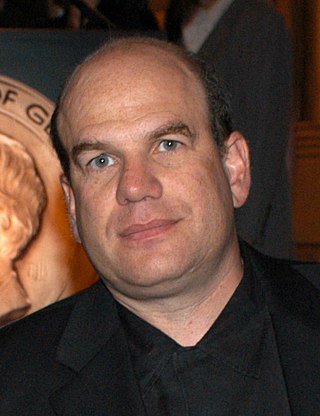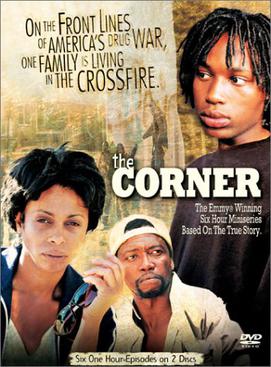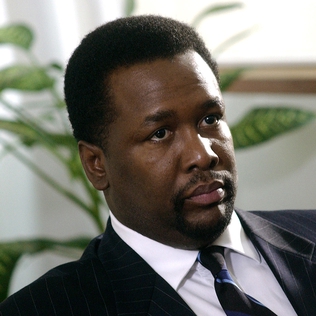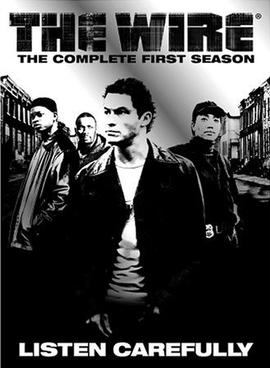
The Wire is an American crime drama television series created and primarily written by American author and former police reporter David Simon. The series was broadcast by the cable network HBO in the United States. The Wire premiered on June 2, 2002, and ended on March 9, 2008, comprising sixty episodes over five seasons. The idea for the show started out as a police drama loosely based on the experiences of Simon's writing partner Ed Burns, a former homicide detective and public school teacher.

David Judah Simon is an American author, journalist, screenwriter, and producer best known for his work on The Wire (2002–08).

Homicide: A Year on the Killing Streets is a 1991 book written by Baltimore Sun reporter David Simon describing a year spent with detectives from the Baltimore Police Department Homicide Unit. The book received the 1992 Edgar Award in the Best Fact Crime category.
Edward P. Burns is an American screenwriter and television producer. He has worked closely with writing partner David Simon. For HBO, they have collaborated on The Corner,The Wire,Generation Kill, The Plot Against America, and We Own This City. Burns is a former Baltimore police detective for the homicide and narcotics divisions, and a public school teacher. He often draws upon these experiences for his writing.

The Corner is a 2000 HBO drama television miniseries based on the nonfiction book The Corner: A Year in the Life of an Inner-City Neighborhood (1997) by David Simon and Ed Burns, and adapted for television by David Simon and David Mills. It premiered on HBO in the United States on April 16, 2000, and concluded its six-part run on May 21, 2000. The series was released on DVD on July 22, 2003. It won the Primetime Emmy Award for Outstanding Miniseries in 2000.
"The Target" is the series premiere of the HBO original series The Wire. The episode was written by David Simon from a story by Simon and Ed Burns and was directed by Clark Johnson. It originally aired on June 2, 2002. The title refers to Detective Jimmy McNulty setting his sights on Stringer Bell and Avon Barksdale's drug-dealing organization as the target of an investigation.

Omar Devone Little is a fictional character on the HBO crime drama series The Wire, portrayed by Michael K. Williams. He is a notorious Baltimore stick-up man, who frequently robs street-level drug dealers. He is legendary around the city for his characteristic duster, under which he hides his shotgun, large caliber handgun, and bulletproof vest, as well as for his facial scar and his whistling of "The Farmer in the Dell" when stalking targets. Omar's homosexual character is based on the heterosexual Baltimore area robber and hitman Donnie Andrews. Andrews served 18 years in prison after murdering a drug dealer. Andrews was married to Francine Boyd, who inspired the miniseries The Corner on HBO.

William "Bunk" Moreland is a fictional character in The Wire, played by Wendell Pierce. Bunk's character is based on a retired Baltimore detective named Oscar "The Bunk" Requer. He is portrayed as a generally competent, if profane and curmudgeonly detective. Like his best friend Jimmy McNulty, he also has problems related to infidelity and alcohol abuse, although he is more mindful than McNulty of the department's chain of command.

Reginald "Bubbles" Cousins is a fictional character on the HBO drama The Wire, played by actor Andre Royo. Bubbles is a recovering heroin addict. His real name is not revealed until a fourth-season episode when he is called "Mr. Cousins" and in the fifth-season premiere when he is called "Reginald". Bubbles has a son named KeyShawn, who lives with his mother. He is nicknamed "Bubbles" because when he is in a heroin-induced stupor, he tends to make bubbles with his spit.
The Baltimore Police Department plays an integral part in The Wire.
On the fictional television drama The Wire, the Stanfield Organization is a criminal organization led by Marlo Stanfield. The Organization is introduced in Season Three of The Wire as a growing and significantly violent drug syndicate. Marlo has established his organization's power in West Baltimore's main streets in the shadow of the dominating Barksdale Organization, which was more concerned with conducting its activities in the Franklin Terrace Towers.
Law enforcement is an integral part of the HBO drama series The Wire. The show has numerous characters in this field and their roles range from those enforcing the law at street level up to those setting laws citywide. The Baltimore City Police Department has been explored in detail from street level characters to the upper echelons of command. The show has also examined those setting laws in city politics and touched upon the FBI, the correctional system and the family of police officers.
Street-level characters comprise a large part of the cast on the fictional HBO drama series The Wire. Characters in this section range from homeless drug addicts up to drug king-pins in charge of entire criminal empires.
Gary D'Addario is an American retired police commander, television technical advisor and actor from Baltimore, Maryland.

The first season of the television series The Wire commenced airing on Sunday, June 2, 2002, at 9:00 pm ET in the United States and concluded on September 8, 2002. The 13 episodes tell the story from the points of view of both the drug-dealing Barksdale organization and the investigating police detail.
Harry Edgerton is a former detective of the Baltimore Police Department. He is notable for his work in the Homicide Unit and on the investigation of drug dealer Melvin Williams with former BPD Detective Ed Burns and the Drug Enforcement Administration. He is notable for working under Sergeant Roger Nolan and Lieutenant Gary D'Addario whose Homicide unit was featured in David Simon's book Homicide: A Year on the Killing Streets. The son of a New York jazz pianist, Edgerton would provide the inspiration for Homicide: Life on the Street character Frank Pembleton, played by Emmy Award winner Andre Braugher.
The American city of Baltimore, Maryland, is notorious for its crime rate, which ranks well above the national average. Violent crime spiked in 2015 after the death of Freddie Gray on April 19, 2015, which touched off riots and an increase in murders. The city recorded 348 homicides in 2019, a number second only to the number recorded in 1993 when the population was nearly 125,000 higher.

Larry Donnell "Donnie" Andrews was an American armed robber, murderer, and anti-crime advocate. He was one of the inspirations for the character Omar Little on the HBO series The Wire.
DeAndre is a given name. Notable people with the name include:

Denise Francine Boyd Andrews was an American drug counsellor and actress.










